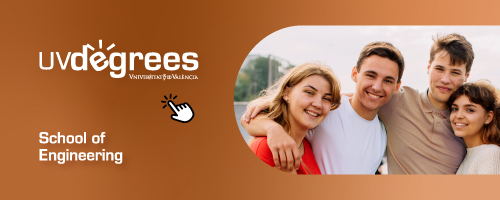
The director of the European Space Research and Technology Centre (ESTEC) of the European Space Agency (ESA), Franco Ongaro, visited today the joint laboratories with the Val Space Consortium.
Franco Ongaro, director of the European Space Research and Technology Centre (ESTEC) of the European Space Agency (ESA), visited this morning the laboratories that the Val Space Consortium (VSC) and the ESA manage in Valencia: the European High Power RF Laboratory of the ESA, located in the Polytechnic City of Innovation, the science park of the Universitat Politècnica de València; and the European High Power Space Materials Laboratory, located in the School of Engineering of the Universitat de València.
“We can only be happy with them. From their opening until today, the VSC-ESA laboratories in located in the UPV and the UV have carried out more than 28,000 testing hours. There is on doubt that these are laboratories of international reference, with professionals who are excellently qualified to respond to the challenges of the aerospace industry”, highlighted Ongaro.
The dean of the Universitat Politècnica de València, Francisco Mora, was pleased to look back: “it was a challenge that appeared 7 years ago, when the European Space Agency conceived a competition to create a big laboratory for microwave power measurements in order to increase its performance for the launch into orbit of Galileo satellites, which are now working. When this call was open, we participated as a university, which was quite new, and we had the support of the Valencian Government, the City Council and the UV, and together we could successfully complete the project. We knew how to respond thanks to the huge work of the people involved".
Centre of reference in high power RF phenomena
In 2010, the European Laboratory in High Power RF of the ESA moved from The Netherlands to the Universitat Politècnica de València. It was then jointly managed by the the Val Space Consortium, a public organisation formed by the Valencian Government, the Valencia City Council, the Universitat Politècnica de València and the Universitat de València Estudi General. It is a highly specialised laboratory that requires very specific technology and knowledge in the fields of high power in RF, specially in breakthrough phenomena which are known as multipactor and corona, as well as in passive intermodulation.
Like the Val Space Consortium said, when they took the reins of the laboratory together with the ESA, the expectations were high: the intention was to help the aerospace industry in Europe and to increase the usage of the facilities for research and development purposes.
“Each year, satellites are required to have more power in the transmission of information to the Earth”, said the technical manager of the laboratory, David Raboso. This request has directly affected the volume and level of the work of the laboratory, which is placed in the Universitat Politècnica de València and has consolidated as an international referent in its field.
It was in 2015 that ESA-VSC High Power RF Laboratory served 18 of the most important companies in the sector and has supported programmes of the European Space Agency as important as Galileo, Biomass, Small-Geo, Exomars or Meteosat, among others. “The initial expectations of the usage of the facilities have been surpassed”, affirms the co-director, Vicente Boria, Full University Professor of the UPV and President of the Executive Committee of the VSC.
The laboratory located in the UPV has the mission of checking the right performance of the flight equipment of the European satellites and spaceships, regarding RF. Apart from giving the official qualification of the ESA, it also advises companies in the design of the space components and participates in the task force to solve problems of in-flight satellites, as well as research and development state-of-the-art projects.
Laboratory in the UV
On the other hand, in June 2012, the VSC and the ESA decided to open a second laboratory in the School of Engineering in the Burjassot-Paterna Campus of the Universitat de València, exclusively dedicated to the study and materials characterisation.
“Materials are very important for the space, the equipment has to work in adverse conditions between 10 and 15 years and they cannot be repaired”, explains the co-director of the new laboratory, Benito Gimeno, full university professor in the UV and Vice-President of the Executive Committee of the VSC. A failure in a component of the satellite can mean the its loss. The objective of the centre is to research and test the materials with which the RF equipment is built, which is a complementary support for the laboratory in the UPV.
The laboratories are open for every type of company of the aerospace sector, as well as for governments and research organisations. This activity is carried out without any profit-making intention, in a wat that the income is used to cover the operating cost. “The Val Space Consortium is working optimally. The achieved benefits are reinvested in updating and improving the facilities, as well as in developing state-of-the-art research and development activities”, highlights the manager of the VSC, David Argilés.
























